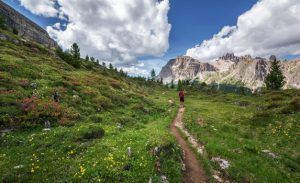
Five Top Tips to prevent injury this Trail Running Season
At TPM we are not only committed to rehabilitating running injuries, but we are also in the business of preventing them where possible. With the Outer Limits Townsville Trail Running series and other trail run events beginning soon, I have compiled my “Top Tips for Injury Prevention in Trail Runners”.
- Practice on unstable surfaces before your trail race: too often I see injuries in high-level road runners who thought they would like to give trail running a go. How hard can it be, right? The unstable running surfaces and external perturbations that are experienced on a trail run are far different to anything that is experienced on road. Practicing on local running trails out at Pallarenda or Douglas Townsville, or even the rock wall past the Entertainment Centre is a great way to get your body ready for the rigours of trail running.
- Do some ankle stability training: again, with these unstable surfaces, commonly I see rolled or sprained ankles during these races. Similar to sports with changes of direction such as netball, soccer, hockey etc., trail running requires that extra bit of ankle stability to maintain a good position while running. Practice balancing on one leg, try it with your eyes closed, try unstable surfaces like pillows and anything else you can think of that will challenge your single-leg balance. Make it fun!
- Pack adequate nutrition for the race: some people will see the distances of the trail runs and think “12km, that’s nothing. I did that for training yesterday. I’ll finish that easy”. Everything is so much different on trail runs. For those elite guys that run 4min/km on the road (or faster), the trails will slow you down ~1min/km (dependent on course). So add another 12 minutes to your time. For the average person running 6min/km, add another 20-30min for your time, once you factor in the climbing. Usually, it is a much longer day out. Pack plenty of gels, lollies, water, sports drink – whatever you need to get you through to the finish line.
- Pack your first aid kit expecting the worst: now this doesn’t mean to pack a 20kg backpack full of everything you would need to get you through a zombie apocalypse. Just make sure you have the essentials if you were to fall and take skin off or, god forbid, get into a fight with a certain slithery slimy animal. Snake bites are rare but can occur, especially in Townsville while it is so dry. Take the necessary precautions in case this happens, but for the newbies, it is still HIGHLY unlikely.
- Practice running up AND DOWN hills on the trails: yes, I don’t generally condone running downhill because of the excessive strain on your joints. However, in most trail runs there are downhill sections you will need to be prepared for, and if done properly, downhill running won’t hurt your legs too much. Follow these five short and fast rules:
- Short, fast steps – this will reduce the braking effect on your legs and give you more control
- Lean forward, not back – once again, reduces braking forces and helps you go faster!
- Look ahead, not straight down – look where you want to go, not where you don’t!
- Use the upper body for balance – keep your upper body relaxed as if you were running on flat ground
- Descend confidently – it will be more fun this way!
Now I’m not saying these five tips will quash any chance of you getting an injury on your run, but they will certainly go a long way in preventing injury when used in conjunction with your usual running conditioning program.
If you have any further questions, call TPM on 1300 TPM FIT (876 348)


